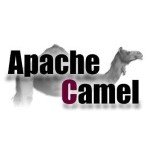Apache Camel Interceptor Example
1. Introduction
This is an in-depth article related to the Apache Camel Interceptor. Apache Camel is open source java package to process data and integrate with other applications. You can use an interceptor to intercept the data during an exchange in the route. The exchange can be incoming or en route.
2. Apache Camel Interceptor
2.1 Prerequisites
Java 7 or 8 is required on the Linux, windows, or Mac operating system. Maven 3.6.1 is required. Apache MQ 5.16.1 and Camel 2.25.2 are used in this example.
2.2 Download
You can download Java 8 can be downloaded from the Oracle website. Apache Maven 3.6.1 can be downloaded from the Apache site. Apache MQ 5.16.1 can be downloaded from the Apache MQ Website.
2.3 Setup
You can set the environment variables for JAVA_HOME and PATH. They can be set as shown below:
Setup
JAVA_HOME="/desktop/jdk1.8.0_73" export JAVA_HOME PATH=$JAVA_HOME/bin:$PATH export PATH
The environment variables for maven are set as below:
Maven Environment
JAVA_HOME=”/jboss/jdk1.8.0_73″ export M2_HOME=/users/bhagvan.kommadi/Desktop/apache-maven-3.6.1 export M2=$M2_HOME/bin export PATH=$M2:$PATH
2.4 How to download and install ActiveMQ
You can extract the archive downloaded from the Apache ActiveMQ site to a folder.
2.5 Apache Camel
Apache Camel can be used to integrate with web services and other applications like SalesForce, Twitter, and Facebook. Apache Camel has around 320 open source components. Apache Camel is based on pipes pattern. The Camel toolkit has a set of adapters to integrate different systems and applications. Different use cases relevant to apache camel integration are sending invoices to Accounts Department, reading data and uploading them to web folders, receiving messages from the message queues and processing them, and calling a web service to get user details from the data source.
2.6 Apache Camel Interceptor Example
Now let us look at the Camel interceptor. To start with, Routes are used to move data from source to destination. It is based on a pipes pattern. The source and destination are endpoints. Routes are written in Java. Below is the sample route in Java :
ExampleRoute
package org.javacodegeeks;
import org.apache.camel.Exchange;
import org.apache.camel.Processor;
import org.apache.camel.builder.RouteBuilder;
public class ExampleRouteBuilder extends RouteBuilder {
int count;
@Override
public void configure() throws Exception {
interceptFrom("*").process(new Processor() {
public void process(Exchange exchange) {
count++;
System.out.println("interceptor called " + count + " times " + exchange.getIn().getBody());
}
});
from("file:mailbox?noop=true").split().tokenize("\n").to("jms:queue:javacodegeeks1");
from("jms:queue:javacodegeeks1").to("jms:queue:javacodegeeks2");
from("jms:queue:javacodegeeks2").to("jms:queue:javacodegeeks3");
}
}
In the above code, endpoints are written at the bottom of the configure method for different routes. Endpoints are defined in URI-like syntax. The configure method has the information for processing routes. Now let us look at the example app where camel context is created and ExampleRouteBuilder routes are created. The sample code is shown below:
ExampleApplication
package org.javacodegeeks;
import javax.jms.ConnectionFactory;
import org.apache.activemq.ActiveMQConnectionFactory;
import org.apache.camel.CamelContext;
import org.apache.camel.component.jms.JmsComponent;
import org.apache.camel.impl.DefaultCamelContext;
public class ExampleApplication {
public static void main(String[] args) {
ExampleRouteBuilder routeBuilder = new ExampleRouteBuilder();
CamelContext context = new DefaultCamelContext();
ConnectionFactory connectionFactory = new ActiveMQConnectionFactory("tcp://0.0.0.0:61616");
context.addComponent("jms", JmsComponent.jmsComponentAutoAcknowledge(connectionFactory));
try {
context.addRoutes(routeBuilder);
context.start();
Thread.sleep(5 * 60 * 1000);
context.stop();
} catch (Exception exception) {
exception.printStackTrace();
}
}
}
You can start the Active MQ server by using the command below:
ActiveMQ start
./activemq start
You can use the maven pom.xml attached below for building the camel code.
Maven POM
<project xmlns="http://maven.apache.org/POM/4.0.0" xmlns:xsi="http://www.w3.org/2001/XMLSchema-instance" xsi:schemaLocation="http://maven.apache.org/POM/4.0.0 http://maven.apache.org/xsd/maven-4.0.0.xsd"> <modelVersion>4.0.0</modelVersion> <groupId>com.javainuse</groupId> <artifactId>camel-dynamic-router</artifactId> <version>0.0.1-SNAPSHOT</version> <dependencies> <dependency> <groupId>org.apache.camel</groupId> <artifactId>camel-core</artifactId> <version>2.25.2</version> </dependency> <dependency> <groupId>org.apache.camel</groupId> <artifactId>camel-jms</artifactId> <version>2.25.2</version> </dependency> <dependency> <groupId>org.apache.activemq</groupId> <artifactId>activemq-camel</artifactId> <version>5.16.1</version> </dependency> <dependency> <groupId>org.apache.activemq</groupId> <artifactId>activemq-broker</artifactId> <version>5.16.1</version> </dependency> <dependency> <groupId>org.apache.activemq</groupId> <artifactId>activemq-client</artifactId> <version>5.16.1</version> </dependency> <dependency> <groupId>org.apache.activemq</groupId> <artifactId>activemq-pool</artifactId> <version>5.16.1</version> </dependency> </dependencies> </project>
You can start building the project by using the maven command
Maven Compile
mvn package
The output of the above command when executed is shown below:
Maven Output
apples-MacBook-Air:apachecamel bhagvan.kommadi$ mvn package [INFO] Scanning for projects... [INFO] [INFO] ---------------------------------- [INFO] Building camel-dynamic-router 0.0.1-SNAPSHOT [INFO] --------------------------------[ jar ]--------------------------------- [INFO] [INFO] --- maven-resources-plugin:2.6:resources (default-resources) @ camel-dynamic-router --- [WARNING] Using platform encoding (UTF-8 actually) to copy filtered resources, i.e. build is platform dependent! [INFO] Copying 0 resource [INFO] [INFO] --- maven-compiler-plugin:3.1:compile (default-compile) @ camel-dynamic-router --- [INFO] Changes detected - recompiling the module! [WARNING] File encoding has not been set, using platform encoding UTF-8, i.e. build is platform dependent! [INFO] Compiling 2 source files to /Users/bhagvan.kommadi/OldDesk/JavacodeGeeks/Code/apachecamel/target/classes [INFO] [INFO] --- maven-resources-plugin:2.6:testResources (default-testResources) @ camel-dynamic-router --- [WARNING] Using platform encoding (UTF-8 actually) to copy filtered resources, i.e. build is platform dependent! [INFO] Copying 0 resource [INFO] [INFO] --- maven-compiler-plugin:3.1:testCompile (default-testCompile) @ camel-dynamic-router --- [INFO] Nothing to compile - all classes are up to date [INFO] [INFO] --- maven-surefire-plugin:2.12.4:test (default-test) @ camel-dynamic-router --- [INFO] [INFO] --- maven-jar-plugin:2.4:jar (default-jar) @ camel-dynamic-router --- [INFO] Building jar: /Users/bhagvan.kommadi/OldDesk/JavacodeGeeks/Code/apachecamel/target/camel-dynamic-router-0.0.1-SNAPSHOT.jar [INFO] ------------------------------------------------------------------------ [INFO] BUILD SUCCESS [INFO] ------------------------------------------------------------------------ [INFO] Total time: 4.658 s [INFO] Finished at: 2022-01-17T01:28:47+05:30 [INFO] ------------------------------------------------------------------------
Now you can run the code using the command below:
Apache Camel Maven Command
java -cp /Users/bhagvan.kommadi/olddesk/javacodegeeks/code/apachecamel/target/camel-dynamic-router-0.0.1-SNAPSHOT.jar:/Users/bhagvan.kommadi/olddesk/apache-activemq-5.16.1/activemq-all-5.16.1.jar org.javacodegeeks.ExampleApplication
The output of the command above when executed is shown below:
Apache Camel Execution
apples-MacBook-Air:apachecamel bhagvan.kommadi$ java -cp /Users/bhagvan.kommadi/olddesk/javacodegeeks/code/apachecamel/target/camel-dynamic-router-0.0.1-SNAPSHOT.jar:/Users/bhagvan.kommadi/olddesk/apache-activemq-5.16.1/activemq-all-5.16.1.jar org.javacodegeeks.ExampleApplication INFO | Apache Camel 2.25.2 (CamelContext: camel-1) is starting INFO | JMX is enabled INFO | Type converters loaded (core: 195, classpath: 3) INFO | StreamCaching is not in use. If using streams then its recommended to enable stream caching. See more details at http://camel.apache.org/stream-caching.html INFO | Endpoint is configured with noop=true so forcing endpoint to be idempotent as well INFO | Using default memory based idempotent repository with cache max size: 1000 INFO | Route: route1 started and consuming from: file://mailbox?noop=true INFO | Route: route2 started and consuming from: jms://queue:javacodegeeks1 INFO | Route: route3 started and consuming from: jms://queue:javacodegeeks2 INFO | Total 3 routes, of which 3 are started INFO | Apache Camel 2.25.2 (CamelContext: camel-1) started in 1.107 seconds
3. Download the Source Code
You can download the full source code of this example here: Apache Camel Interceptor Example




